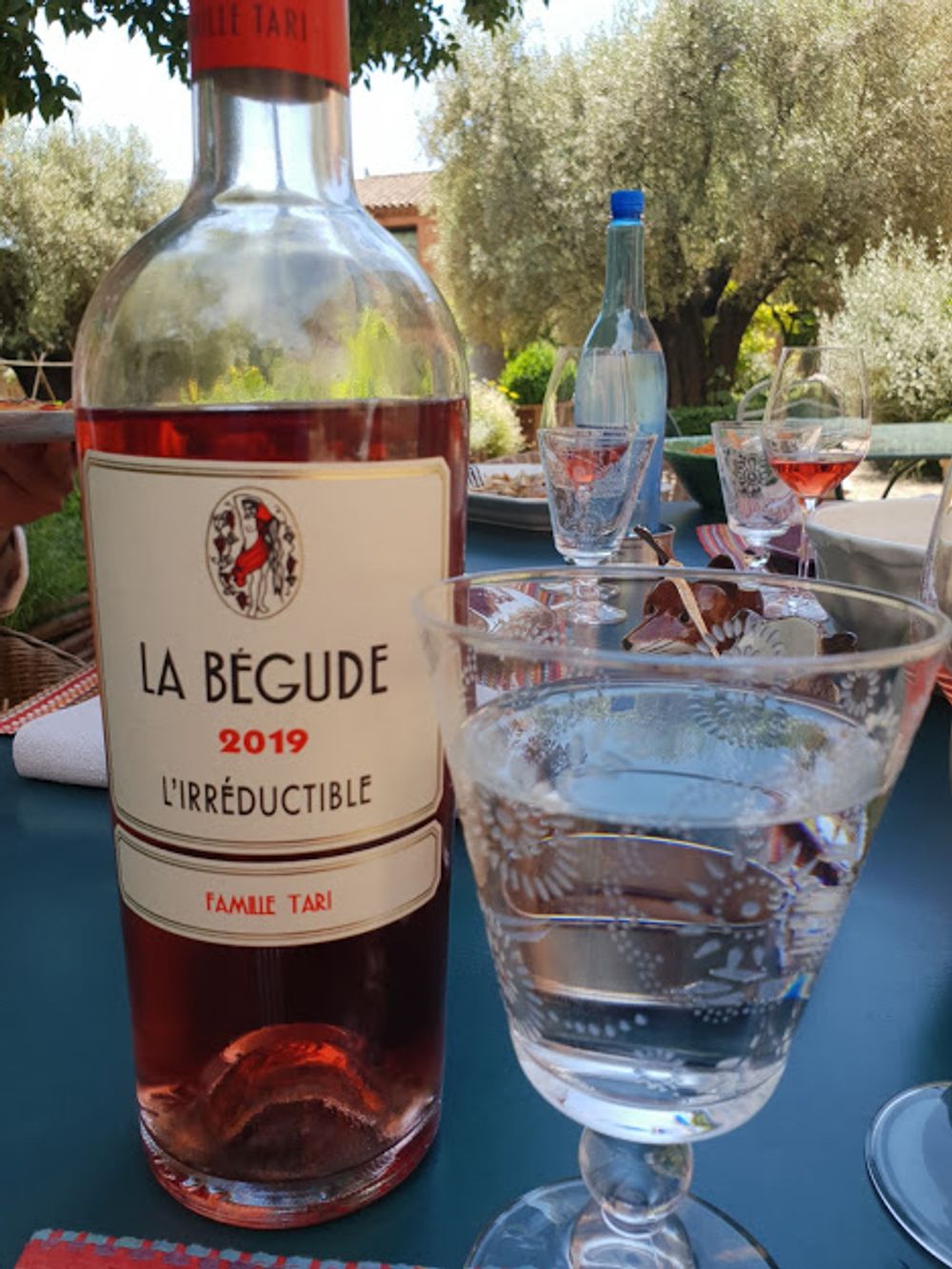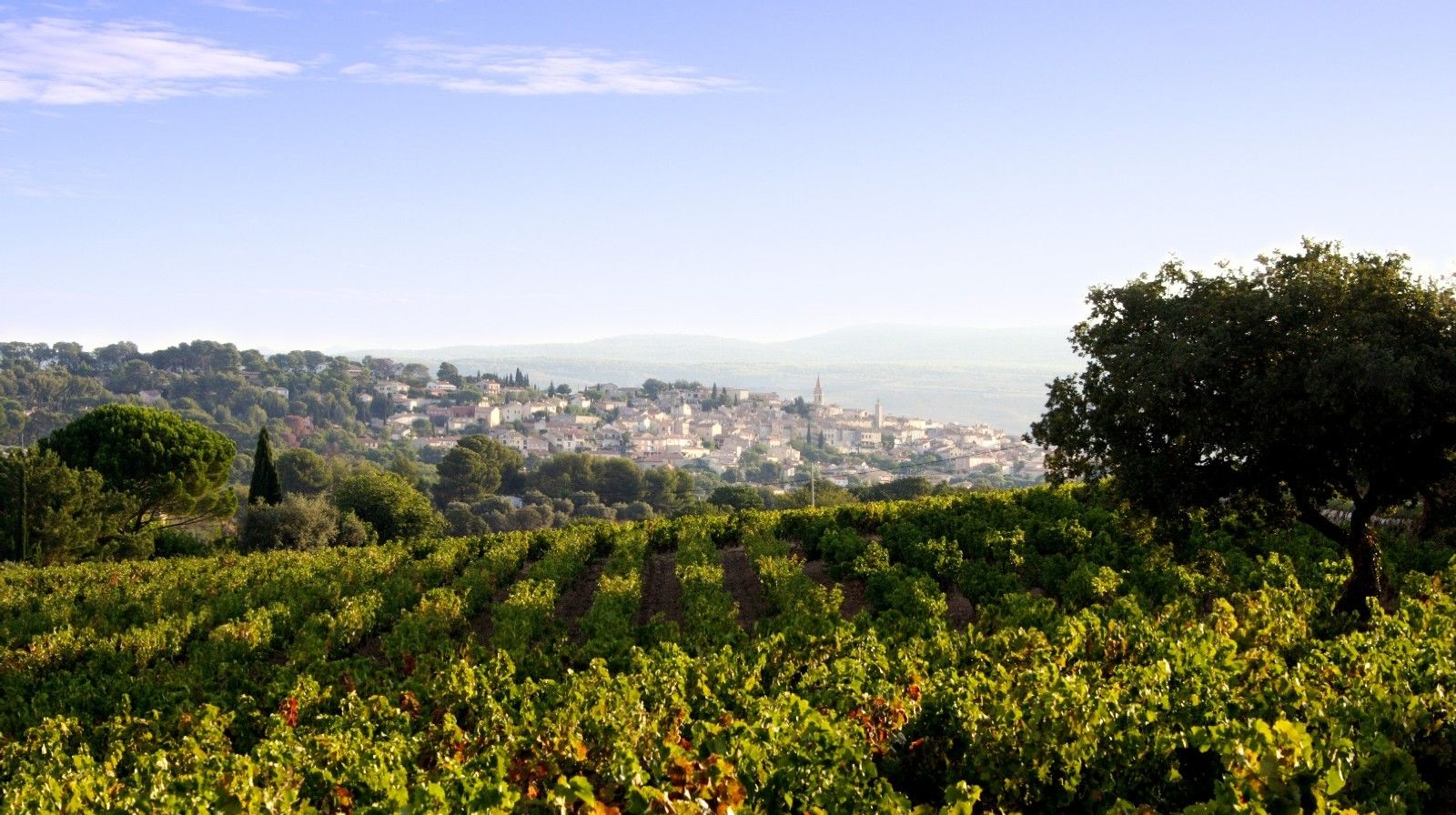“Bandol terroir gives Mourvèdre extra ripeness, greater fruit weight and structure, although a number of producers are emulating lighter Provence styles,” writes Gabay.
I first fell in love with the wines of Bandol at a tasting with Liz and Mike Berry at their London shop, La Vigneronne in the 1980s. Powerful tannins and ripe strawberry fruit were enticing with age but, when young, the tannins were almost impenetrable. Back then, rosé did not even feature as part of the tasting.
In 2021, however, the reverse is almost the case in a tasting involving 50 wines from the region – both Bandol rosé and red from different vintages; the different ages of Mourvèdre from Bandol are clearly illustrated from the youth of the rosés to the maturity of the reds.

The port of Bandol
Bandol, long been held in esteem for its great red Mourvèdre, is one of the three oldest appellations in Provence, created in 1941 (the others being Cassis and Bellet). The only other appellation making Mourvèdre reds is Jumilla in Spain, so it comes as no surprise that Mourvèdre came to France from Spain; tradition says that it was brought to France by pilgrims returning from Santiago de Compostela in the 16th century. Mourvèdre vines are described as Spanish in stature, tall and upright.
The vineyards of Bandol cover almost 1600ha, in a vast amphitheatre, sloping southwards towards the sea and sheltered by the massif of Sainte Baume (1147m) to the north. The terraced slopes are composed of eroded layers of clay and limestone.
Mourvèdre buds late, a saving grace in the April 2021 frosts which devastated France. It needs a long ripening season, with plenty of heat and light, to fully ripen; winemakers say Mourvèdre needs its head in the sun… but it also needs its feet in the sea, and the maritime winds keep the vineyards moist.
Bandol, while famous for its reds, currently dedicates over 70% of its production to rosés. There are a number of reasons for this trend. Rosé is released from the 1st March the year after the vintage, any earlier and the wine is closed up.
Rosé is made from Mourvèdre planted on the cooler sites, higher up or facing away from the sea, as the grapes will become lighter and fresher. After four years, fruit can be used for rosé, while the reds have to wait until the vines are eight years old. Some estates also produce a high percentage of rosé.
In most conversations regarding top rosés from around the world, that from Domaine Tempier in Bandol is one of the wines most frequently cited. The rosé tasted are part of the same clearly-defined Bandol rosé style with evident complexity and ageing potential.
Bandol terroir gives Mourvèdre extra ripeness, greater fruit weight and structure (clearly detectable in a blind tasting compared to Provence rosés), although a number of producers are emulating lighter Provence styles. When Mourvèdre is a little less ripe there can be similar structure, but is blunter and lacks the fruit.

Bandol Rosé 2020
These 2020 rosés have around 60% Mourvèdre plus roughly equal amounts of Grenache and Cinsault. A common thread of these rosés from the 2020 vintage was the juxtaposition of fresh fruit and more intense complex notes.
Château Croix d’Allons has rich peaches, hints of exotic fruit, a touch of blood orange, firm structure and fresh acidity while Château Romassan, has floral, perfumed pêche de vigne and candied lemon freshness. Others have more red fruit. Château de la Noblesse has strawberries and cream, sour cherries, honeyed peaches and a touch of orange peel on the finish and Domaine des Trois Filles has ripe cherries, a hint of bitter almonds, cranberries, creamy acidity, spice and a twist of vibrant bitter orange. Château Sainte Anne, one of the most natural of all the Bandol wines, is lighter and more zesty with Twiglets-meets-strawberries fruit, redcurrants, blood oranges and a fine saline finish. Château Canadel has floral and juicy red cherries delicately peeping behind the firm saline, savoury structure which will open up with time. Domaine Vigneret is seriously weighty with dark fruit, opulent cooked raspberries and a hint of black tea. A rosé with power and confidence, bold but not a whispering angel.
Bandol Rosé 2019
The two examples from 2019 had high percentages of Mourvèdre, illustrating beautifully intense, ripe black fruit. Irréductible, Domaine de la Bégude with 75% Mourvèdre, from the highest altitude vineyards of Bandol, is also the darkest with concentrated blackcurrants, opulent cherry jam and an almost leafy ethereal acidity, weight and a steely saline finish. Domaine Marie Bérénice with 80% Mourvèdre also has luscious ripe cherry jam, rich marmalade, walnuts, long sour berry acidity and phenolic herbal finish.

Older vintages of Bandol Rosé
Bandol rosés are known for their ageing potential and complexity and with maturity comes greater secondary flavours. This may be counter-intuitive to many, but rosés with age complexity are delightful and great with food. Domaine de l’Olivette’s Absolu 2018, is almost all Mourvèdre (95%). Intense dried apricots, nuts, a twist of Seville marmalade, bitter chocolate, minerality and an intensely salty finish, beautiful with aged hard cheese. Château Pradeaux 2018 is seriously weighty with milk chocolate biscuits and gentle sweet, caramelised spice and long mineral acidity.
The oldest rosé in this tasting was the 2017 from Domaine de la Font des Pères. Interestingly it also had the lowest amount of Mourvèdre (39%) with equal percentages of Grenache and Cinsault. Unsurprisingly Grenache red berry fruit was evident before developing mature Mourvèdre notes of floral perfume, sour orange freshness, a touch of spice and nuts, long acidity and elegant structure.
These rosés are clearly not a style for drinking chilled by the pool but are serious wines which might inspire chefs to think up interesting and complex dishes beyond the classic Mediterranean diet and to partner richer food throughout the autumn and winter. Their ability to age removes the stress of left-over rosé at the end of the summer – these are serious wines.









































